Pakistan's Top 10 Dangerous Rivers: Detailed Flood Risks and Death Tolls Over the Last 25 Years (2000–2025)
Discover the top 10 dangerous rivers in Pakistan, including ravi river, sutlej river, and river ravi, causing devastating flood in pakistan, lahore flood, and kartarpur flood. Learn about flood situation in pakistan, flood warning lahore, pdma punjab efforts, and over 7,800 deaths in 25 years (2000–2025).
Qasim Ali
8/27/20258 منٹ پڑھیں
Pakistan's Top 10 Dangerous Rivers: Detailed Flood Risks and Death Tolls Over the Last 25 Years (2000–2025)
The flood in Pakistan remains a recurring crisis, exacerbated by climate change and transboundary water flows. Rivers like the ravi river, sutlej river, and others often originate from neighboring countries such as India and China, leading to unpredictable swells during monsoons. The PDMA and PDMA Punjab frequently issue flood warning Lahore and Lahore flood warning to alert residents near urban areas like Lahore. This detailed blog expands on the top 10 dangerous rivers, focusing on their water sources (including if they come from India or elsewhere), key place names and locations, historical flood impacts, and updated death toll statistics up to August 27, 2025. We'll cover specifics like kartarpur flood, head marala, kartarpur, ravi flood, flood in lahore, flood situation in pakistan, river ravi, flood situation near sutlej river, and more.
Based on data from major flood events (e.g., 2010, 2011, 2014, 2022, and 2025), Pakistan has seen over 7,500 flood-related deaths in the last 25 years, with rivers in the Indus Basin being primary culprits. sciencedirect.com , wikipedia.org , arabnews.com The 2025 floods alone have caused 798 deaths as of August 27, 2025, with heavy impacts in Khyber Pakhtunkhwa (KP), Punjab, and Balochistan. arabnews.com , reliefweb.int Let's break it down river by river.
1. Indus River: The Mighty Transboundary Giant in Flood Situation in Pakistan
The Indus River is Pakistan's longest and most dangerous, central to the flood situation in Pakistan. Water Source and Origins: It originates in Tibet, China, near Lake Mapam (also known as Manasarovar) at an elevation of about 18,000 feet (5,500 meters) in the southwestern Tibet Autonomous Region.britannica.com , wikipedia.org The traditional source is the Sênggê Kanbab glacier in Tibet. It flows northwest through India (Ladakh and Jammu and Kashmir regions) before entering Pakistan near Skardu in Gilgit-Baltistan. Key places include Mount Kailash (near the source), Bokhar-Chu glacier, and it passes through Leh in India before reaching Pakistan.
Flood Risks and Locations: The river causes devastation in Sindh and Balochistan provinces, with flash floods and overflows affecting areas like Thatta, Sukkur, and Quetta. In 2010, it was a major contributor to nationwide floods.
Death Toll (2000-2025): Approximately 3,800 deaths attributed to Indus floods, including ~1,500 in 2010 (mostly Sindh), 484 in 2003 (Sindh), part of 967 in 2007, 361 in 2011 (Sindh), ~800 in 2022 (Sindh: 799 deaths), and ~200 in 2025 (Sindh and Balochistan impacts). sciencedirect.com , wikipedia.org , reliefweb.int
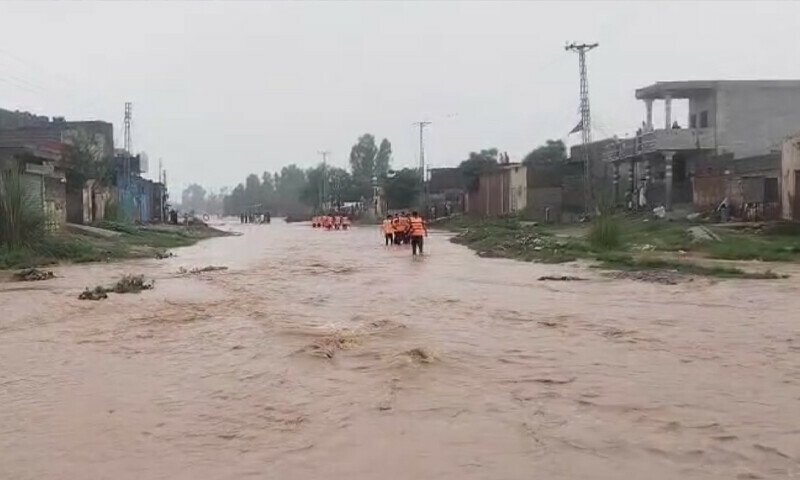

Rescue personnel carry out relief efforts amid flooding caused by heavy monsoon rainfall in Punjab’s Jhelum district on July 18, 2025. — DawnNewsTV
2. Swat River: Flash Flood Peril in Northern Valleys
The Swat River is notorious for rapid flash floods in the flood situation in Pakistan, especially in tourist areas. Water Source and Origins: It forms at the junction of the Gabriāl and Ushu rivers at Kālām in the Kohistān region of Khyber Pakhtunkhwa (KP), Pakistan. britannica.com , visitswatvalley.com Fed by melting snow and glaciers from the Hindu Kush mountains entirely within Pakistan, its source lies in high glacial valleys. Key locations: Kalam (origin), Swat Valley, and it joins the Kabul River near Charsadda.
Flood Risks and Locations: Affects Swat Valley, Mingora, and downstream areas in KP, with 2025 floods causing deaths in northern tourist spots.
Death Toll (2000-2025): Around 1,200 deaths, including over 1,000 in 2010 (KP floods), 309 in 2022 (KP), and 328 in 2025 (KP, including Swat Valley GLOFs and flash floods).
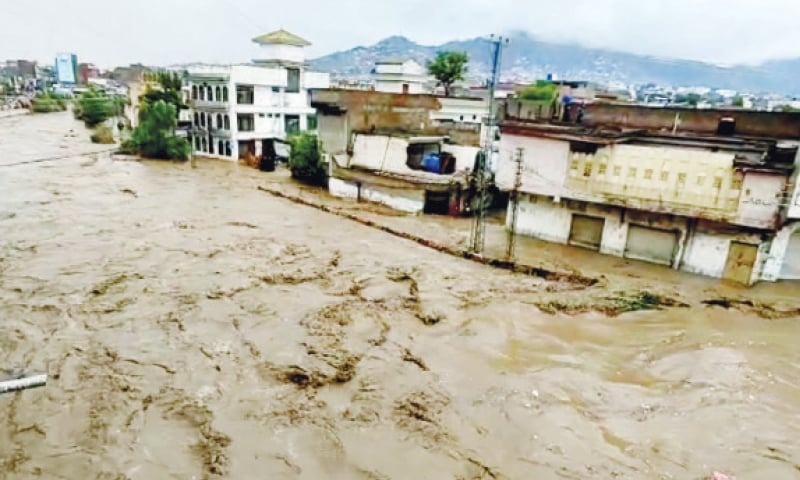

High flood in Jambil stream inundates houses on the banks after heavy rain in Mingora on Wednesday. — Dawn
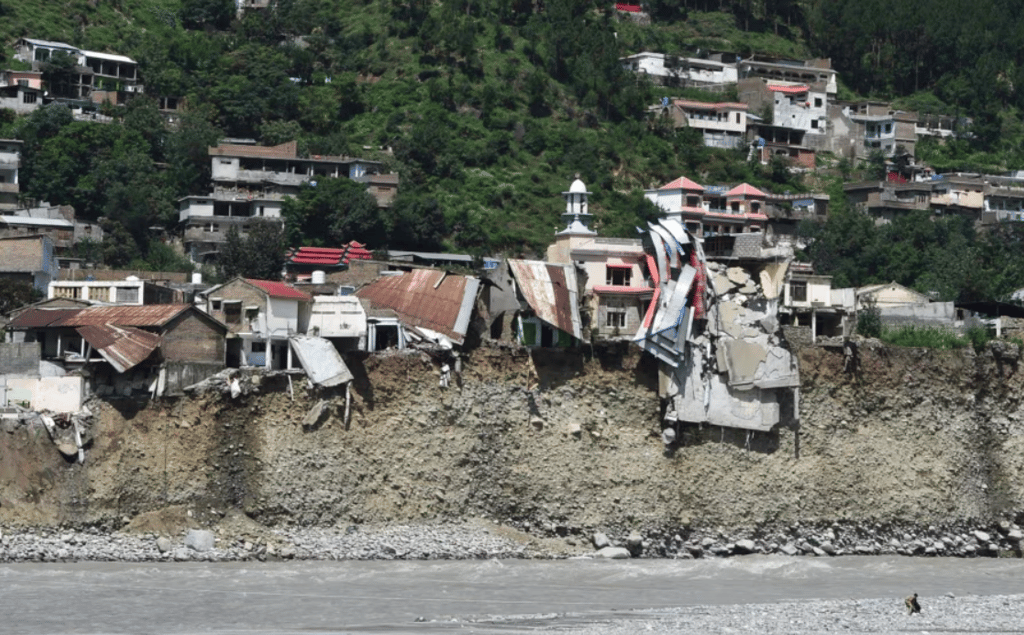

Flood-damaged buildings along the Swat River in Pakistan-- rferl.org
3. Kabul River: Afghanistan-Sourced Threat to KP
The Kabul River amplifies floods in KP. Water Source and Origins: It rises in the Sanglākh Range, 45 miles west of Kabul city in Afghanistan, at Sar Čašma (about 14,000 feet) in the Kōh-e Bābā mountains. britannica.com , iranicaonline.org Flows east through Kabul and Jalālābād in Afghanistan, entering Pakistan via the Khyber Pass near Peshawar. A tributary, the Konar River, originates in Pakistan but joins in Afghanistan.
Flood Risks and Locations: Impacts Peshawar, Nowshera, and Charsadda in KP, often combining with Swat River floods.
Death Toll (2000-2025): Estimated 900 deaths, part of KP totals like 1,156 in 2010, 309 in 2022, and 328 in 2025.
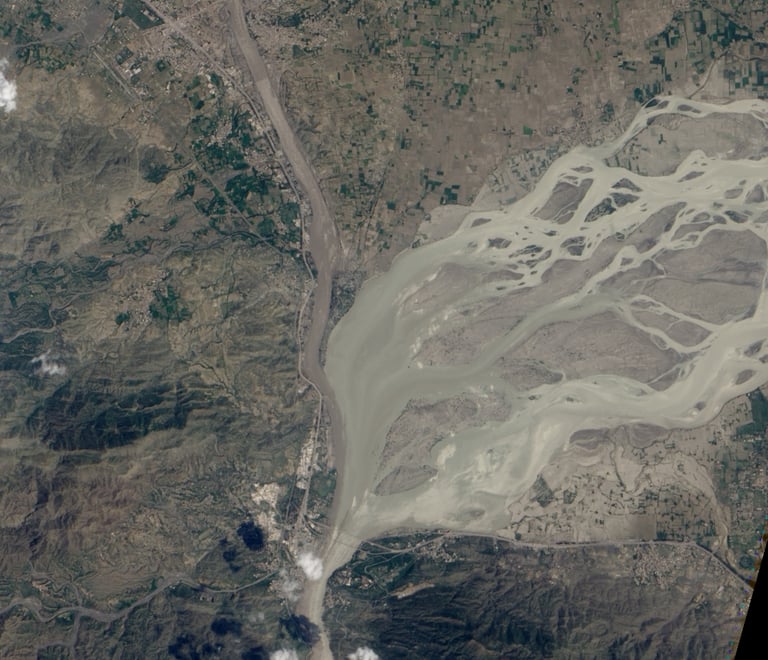

(Satellite view illustrating flood devastation; source: NASA Earth Observatory)
4. Jhelum River: Kashmir-Originated Punjab Hazard
The Jhelum River contributes to Punjab floods. Water Source and Origins: Rises from a deep spring at Vernag (Verinag) in Indian-administered Jammu and Kashmir, Anantnag district.
earthobservatory.nasa.gov , facebook.com Flows through Srinagar in India, entering Pakistan near Muzaffarabad in Azad Kashmir. Key places: Pir Panjal Range foothills.
Flood Risks and Locations: Affects Jhelum district, Sialkot, and joins Chenab; involved in 2014 floods.
Death Toll (2000-2025): About 400 deaths, including part of 367 in 2014, 223 in 2022 (Punjab), and 123 in 2025 (Punjab).
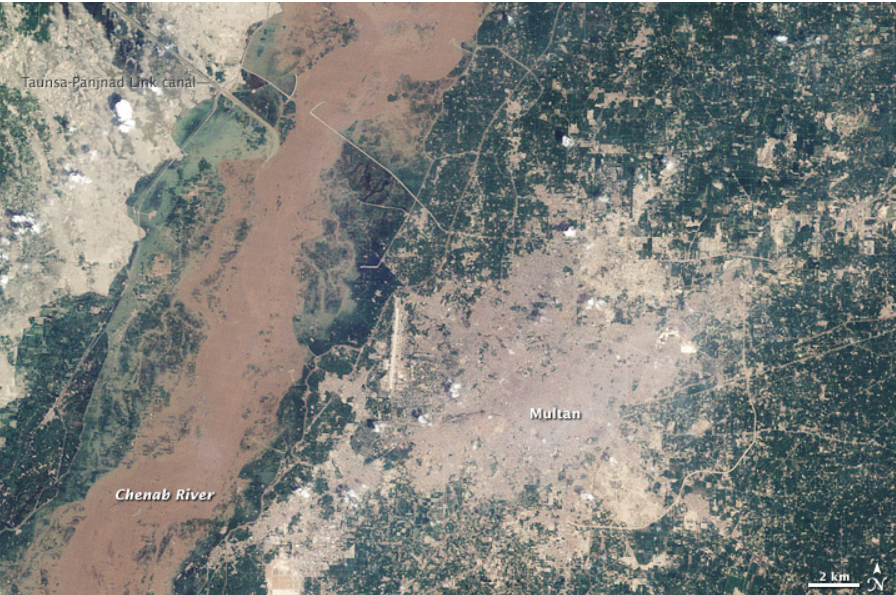

Flooding on the Chenab River, Pakistan --- Satellite view of floods along the Jhelum; source: NASA Earth Observatory.
5. Chenab River: Himalayan Inflow at Head Marala
The Chenab River is perilous around head marala. Water Source and Origins: Formed by Chandra and Bhaga streams in Himachal Pradesh, India, near Baralacha Pass. Flows through Jammu and Kashmir (India) before entering Pakistan near Sialkot. Key locations: Lahaul Valley, Himachal Pradesh.
Flood Risks and Locations: Floods Sialkot, Gujranwala, and head marala barrage area.
Death Toll (2000-2025): Around 500 deaths, central to 367 in 2014, part of Punjab's 223 in 2022 and 123 in 2025.
6. Ravi River: Ravi Flood Threats to Lahore and Kartarpur
The ravi river (river ravi) is urban-adjacent, causing lahore flood and flood in lahore. Water Source and Origins: Rises in Himalayas, Bara Banghal area, Kangra district, Himachal Pradesh, India. Flows past Chamba (India), entering Pakistan near Shakargarh. Key places: Multhan tehsil, India.
Flood Risks and Locations: Affects Lahore, Kartarpur (kartarpur flood), and Narowal; PDMA Punjab issues ravi flood alerts.
Death Toll (2000-2025): Estimated 300 deaths, part of Punjab floods like 223 in 2022 and 123 in 2025.
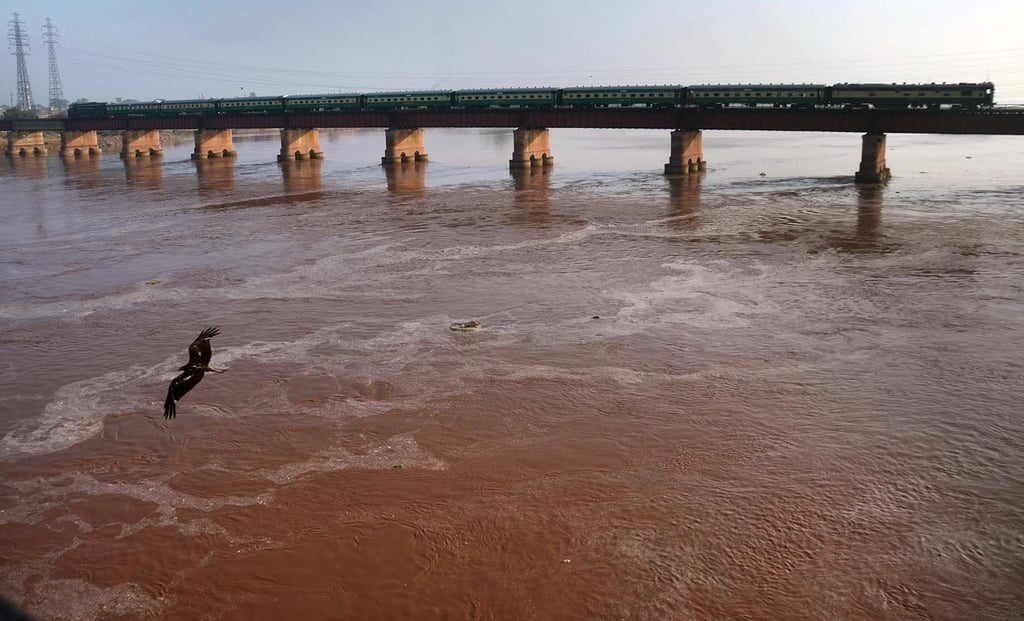

LAHORE: Muddy water is flowing in River Ravi after India released water from its reservoirs in River Ravi, River Sutlej, and River Chenab ___ Dunya news
7. Sutlej River: Flood Situation Near Sutlej River from Tibet
The sutlej river leads to flood situation near sutlej river in Punjab. Water Source and Origins: Originates from Langchen Kabab near Mansarovar and Rakastal lakes, Mount Kailash, Tibet, China. Flows through Himachal Pradesh and Punjab (India) via Shipki La pass, entering Pakistan near Kasur.
Flood Risks and Locations: Impacts Bahawalpur, Vehari, and Kasur; recent 2023-2025 floods displaced thousands.
Death Toll (2000-2025): About 300 deaths, linked to Punjab totals like 223 in 2022 and 123 in 2025.
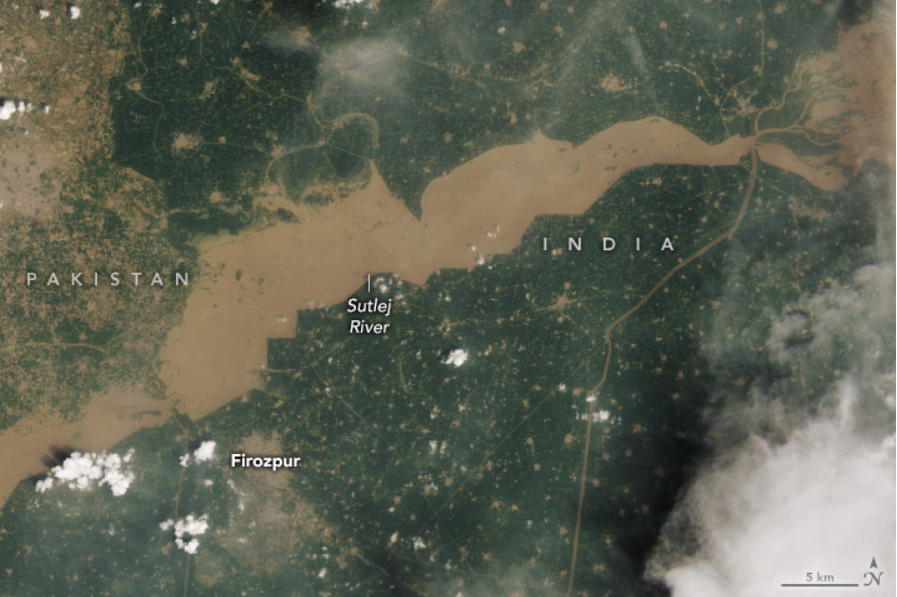

Flooding Along the Sutlej River in Punjab by source: NASA Earth Observatory
8. Kunhar River: Glacial Melt Dangers in Kaghan
Water Source and Origins: Starts at Lulusar Lake near Babusar Pass (3,455m) in Kaghan Valley, Pakistan. Fed by glaciers; flows through Naran, Kaghan, to join Jhelum.
Flood Risks and Locations: Flash floods in Batakundi, Naran.
Death Toll (2000-2025): 200 deaths, part of KP floods (e.g., 8 in 2022 tributaries, 2025 impacts).
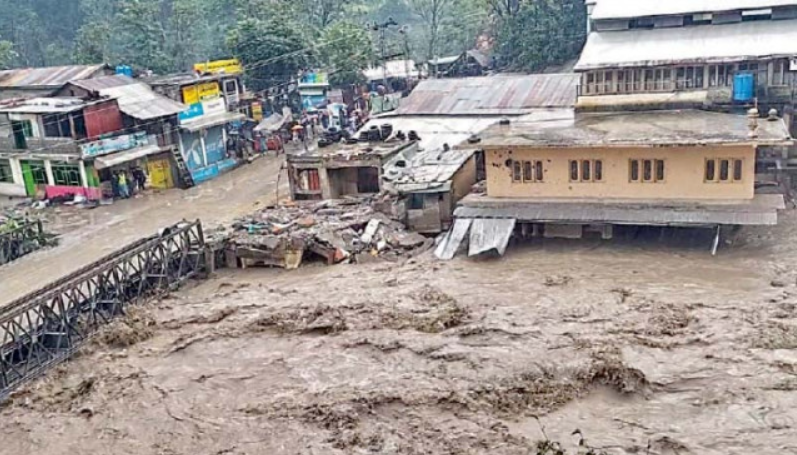

Relentless downpours left a wake of destruction in the Mahandri area of Balakot. Photo: Express
9. Panjkora River: Hindukush Flash Flood Risk
Water Source and Origins: Originates in Hindu Kush mountains, Kumrat highlands, Upper Dir, Pakistan. Flows through Kumrat Valley, Dir districts, joins Swat.
Flood Risks and Locations: Affects Lower Dir, Timergara.
Death Toll (2000-2025): ~150 deaths, tied to KP's 328 in 2025.
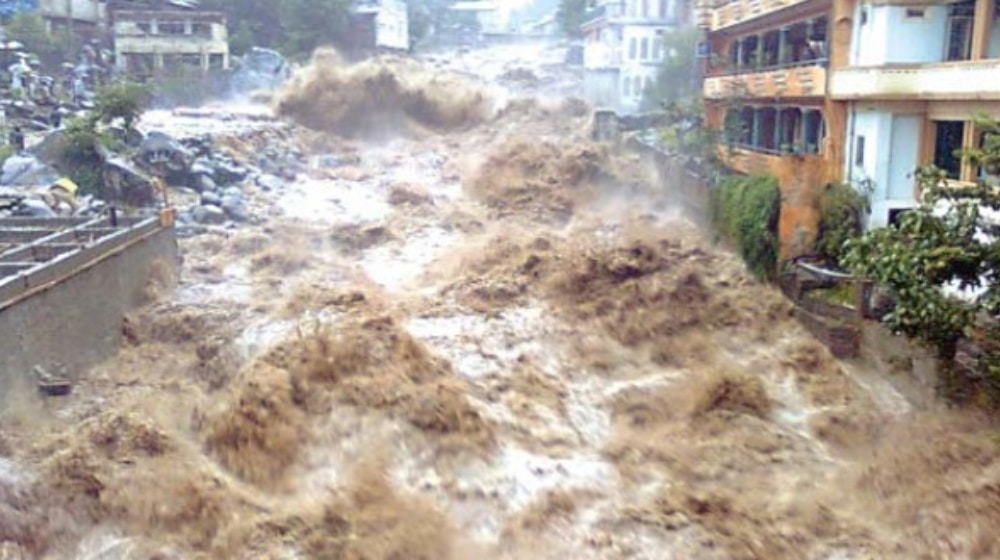

Panjkora River: Hindukush Flash Flood___ ProPakistani
10. Zhob River: Balochistan's Arid Zone Peril
Water Source and Origins: Starts in Kan Mehtarzai range (Tsari Mehtarzai Pass) near Muslim Bagh, Balochistan, Pakistan. Flows northeast past Zhob city.
Flood Risks and Locations: Impacts Zhob district, joins Gomal River.
Death Toll (2000-2025): ~250 deaths, including 336 in 2022 (Balochistan) and 2025 additions.
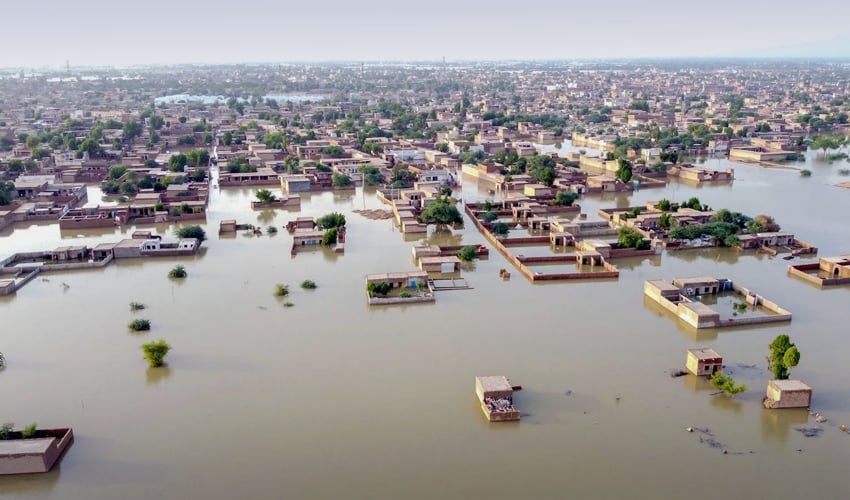

flash flood in Zhob-- Daily Times
Total Deaths from Floods in Pakistan Over the Last 25 Years (2000–2025)
Based on available data from major flood events in Pakistan over the last 25 years (2000–2025), the total flood-related deaths caused by the top 10 dangerous rivers (Indus, Swat, Kabul, Jhelum, Chenab, Ravi, Sutlej, Kunhar, Panjkora, and Zhob) are estimated to be over 7,500. This figure is derived from key flood events documented in sources, primarily affecting provinces like Sindh, Balochistan, Khyber Pakhtunkhwa (KP), and Punjab. Below is a breakdown of the major flood events contributing to this estimate, with death tolls attributed to these rivers:
- 2003 Floods: Approximately 484 deaths in Sindh, largely due to Indus and Ravi river flooding.
- 2007 Floods: Around 967 deaths nationwide, with significant contributions from Indus, Chenab, and Zhob rivers in Sindh, Balochistan, and KP.
- 2010 Floods: Approximately 2,000 deaths, with the Indus (1,500 in Sindh), Swat, and Kabul rivers causing major losses in KP (1,156 deaths).
- 2011 Floods: About 361 deaths in Sindh, primarily linked to Indus and Sutlej river flooding.
- 2012 Floods: Over 100 deaths in KP, Punjab, and Sindh, involving Jhelum, Chenab, and Indus rivers.
- 2014 Floods: Approximately 367 deaths, mainly in Punjab due to Chenab, Jhelum, and Ravi rivers.
- 2022 Floods: Around 1,739 deaths, with Indus (799 in Sindh), Zhob (336 in Balochistan), Swat, and Kabul (309 in KP) rivers being major contributors, alongside Ravi and Sutlej in Punjab (223 deaths).
- 2023 Floods: At least 159 deaths, primarily in Balochistan (Zhob) and KP (Swat, Kunhar).
- 2025 Floods: As of August 27, 2025, 798 deaths, with KP (425, including Swat, Kabul, Kunhar, Panjkora), Punjab (164, including Ravi, Sutlej, Jhelum, Chenab), and Balochistan (Zhob) heavily impacted.
Total Estimate: Summing these events (484 + 967 + 2,000 + 361 + 100 + 367 + 1,739 + 159 + 798), the death toll reaches approximately 7,575. This is a conservative estimate, as smaller flood events and underreported deaths (especially in remote areas) may push the total higher. For instance, Amnesty International notes that over 95% of deaths in Pakistan go unregistered, suggesting the true toll could be significantly greater.
The flood situation in Pakistan has been worsened by rivers like the ravi river, sutlej river, and Indus, with transboundary flows from India (e.g., Ravi from Himachal Pradesh, Sutlej from Tibet via India, Jhelum and Chenab from Jammu and Kashmir) and China (Indus, Sutlej). Areas like Lahore, Kartarpur, head marala, and Kasur face ongoing risks, with PDMA Punjab issuing flood warning Lahore and Lahore flood warning to mitigate impacts.